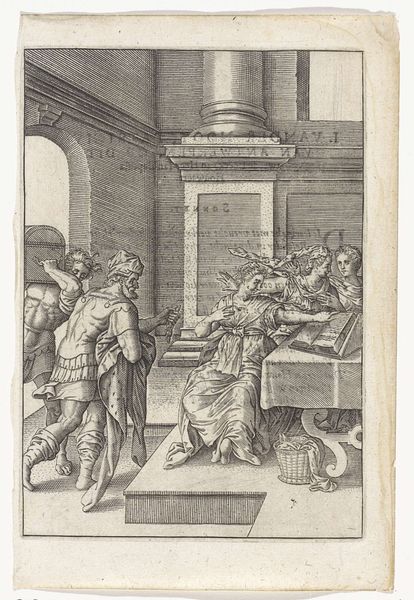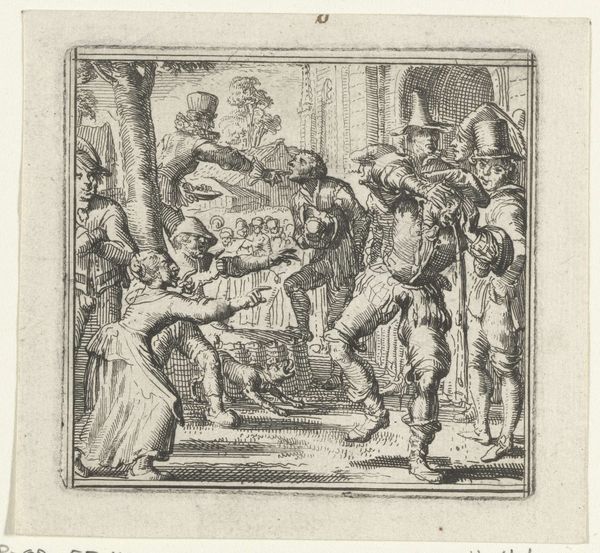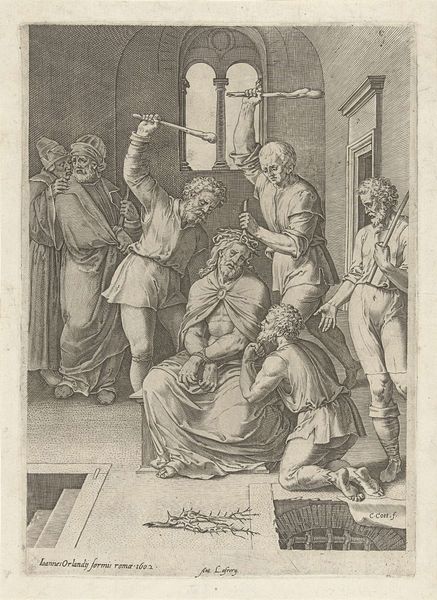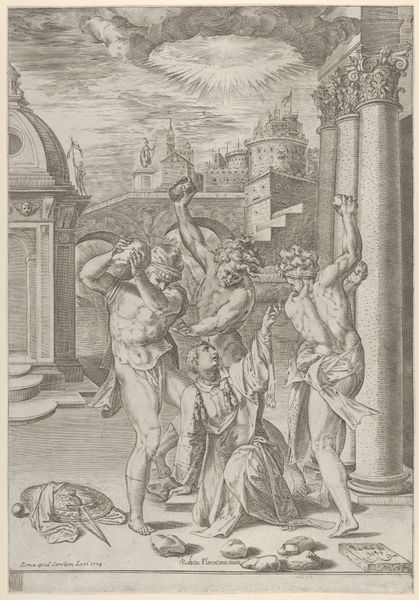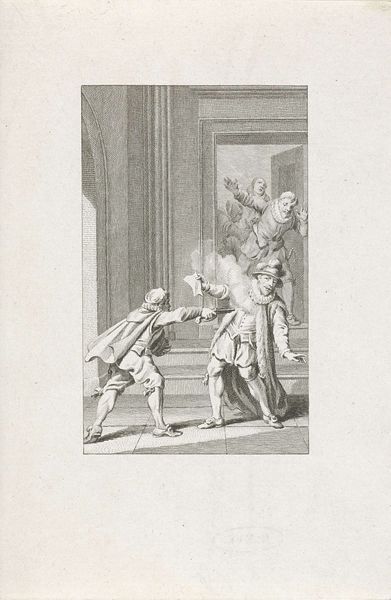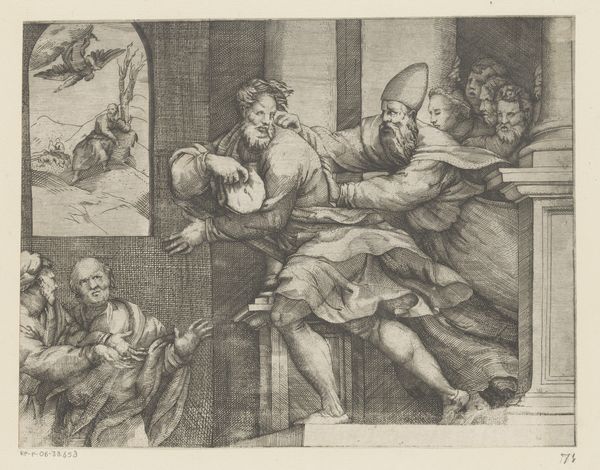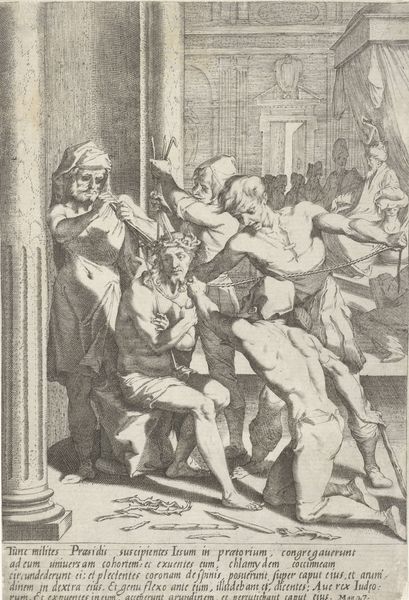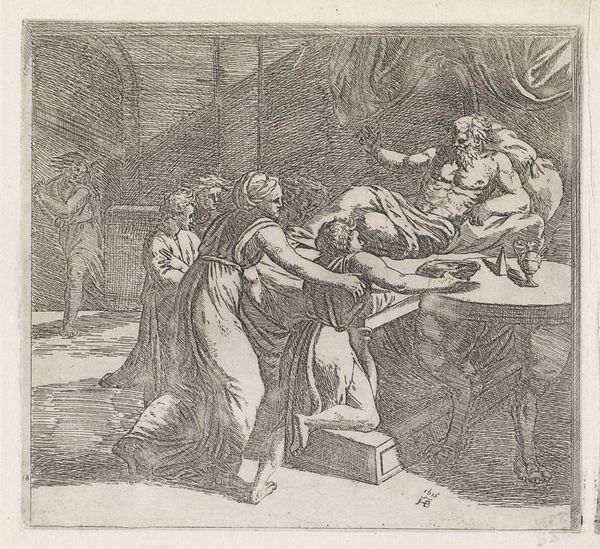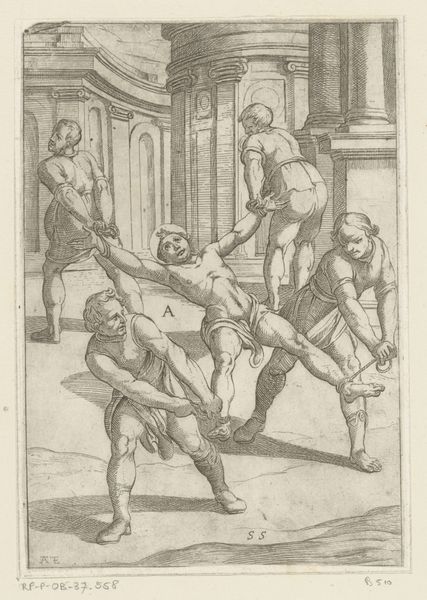
print, engraving
#
baroque
# print
#
figuration
#
history-painting
#
engraving
Dimensions: height 154 mm, width 108 mm
Copyright: Rijks Museum: Open Domain
Curator: Looking at "The Virtue of Women", an engraving crafted between 1614 and 1616 by an anonymous artist and held at the Rijksmuseum, I'm struck by the dynamic staging—the angular composition creates an unsettling tension. Editor: Indeed, that staging and contrast is potent. Immediately, my eye goes to the sword in the kneeling woman's hand, as she grasps a king by the wrist. The implied threat is remarkable for an engraving of that era. What is the dialogue here, beyond power and virtue? Curator: The figuration is classical. Notice the architecture: arches, columns, and classical garments point to a clear intention to construct a narrative deeply rooted in historical and philosophical themes. This meticulous detailing extends to the very textures implied by the engraving, imbuing each figure with symbolic weight. Editor: Symbolism for sure, and also process. This is a print—a mass-produced image intended for dissemination, perhaps to circulate these notions of virtue as tied to this drama and potential threat to power. I'm fascinated by the choice of medium, enabling the broad spread of this "virtuous" woman's challenge to a crown. Was virtue intended as something contagious, reproducible? Curator: The repetition of lines, the precision of the burin's cut, certainly elevate this to more than a mere illustration. Semiotically, the repetition reinforces the virtue represented, casting it as unwavering and replicable. Consider how each engraved line serves as a signifier—collectively shaping our understanding of female virtue as the artist intended. Editor: So, a very deliberate social function of its production and broad distribution; and yet the artist remains anonymous. What does that say about labor here? The skills of the engraver, critical to delivering this political message, remain obscured behind the message of wifely virtue and defiance. An absence almost as potent as the figures portrayed, wouldn't you say? Curator: Precisely! It leads us to a far richer appreciation of what is absent as much as what is obviously displayed. Editor: An important duality that complicates the original reading considerably. A point of view is offered that the image questions and possibly undermine. Curator: The print does become more than just ink on paper—it evolves into a dialogue about power, virtue, and the hidden labors that disseminate cultural meaning.
Comments
No comments
Be the first to comment and join the conversation on the ultimate creative platform.
